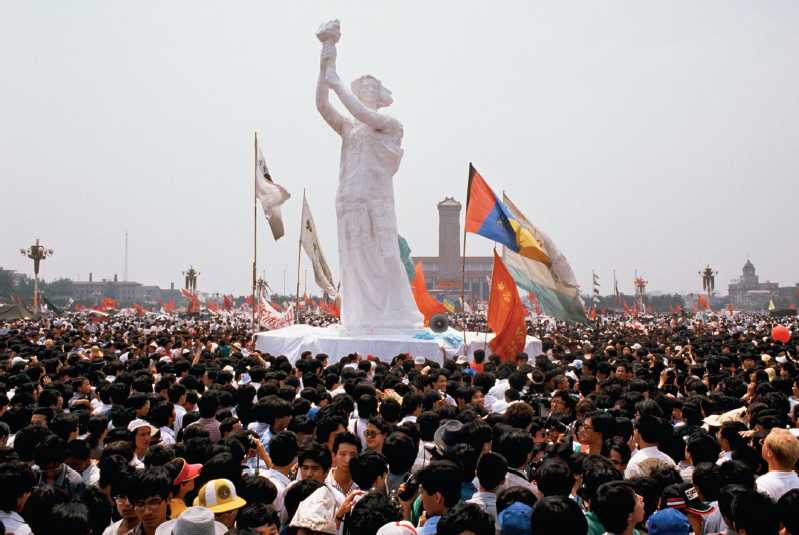Understanding World Societies:
Printed Page 1011
China’s Economic Resurgence
Mao’s Cultural Revolution of 1965–
After Mao’s death in 1976, Chinese leader Deng Xiaoping (1904–
The successful use of free markets in agriculture encouraged further experimentation. Foreign capitalists were allowed to open factories in southern China and to export their products around the world. Private enterprise was permitted in cities. China’s Communist Party also drew on the business talent of “overseas” Chinese in Hong Kong and Taiwan who understood world markets and sought cheap labor. The Chinese economy grew rapidly between 1978 and 1987, and per capita income doubled in these years.
Most large-
More than a million people streamed into Beijing’s central Tiananmen Square in support of the students’ demands. The government declared martial law and ordered the army to clear the students. Masses of courageous citizens blocked the soldiers’ entry into the city for two weeks, but in the early hours of June 4, 1989, tanks rolled into Tiananmen Square. At least seven hundred students died as a wave of repression, arrests, and executions descended on China.

Protesters in Tiananmen Square surround a towering figure of the Goddess of Democracy built by Chinese art students. The statue was eventually destroyed by Chinese soldiers. (© Peter Turnley/Corbis)> PICTURING THE PASTANALYZING THE IMAGE: What do you think this statue symbolized for demonstrators in Tiananmen Square?CONNECTIONS: Why has the Goddess of Democracy become a lasting symbol of the 1989 student movement?
As communism fell in eastern Europe and the Soviet Union broke apart, China’s rulers felt vindicated. They believed their action had preserved Communist power, prevented chaos, and demonstrated the limits of reform. China became politically Communist and economically capitalist. In 2001 China joined the World Trade Organization, completing its immersion in the liberal global economy.
The Chinese Economy (1978–2012)
- Nine percent average annual rate of growth and 16 percent average annual growth of foreign trade
- Average per capita income in China doubled every ten years
- March 2011 China replaced Japan as the world’s second-
largest economy